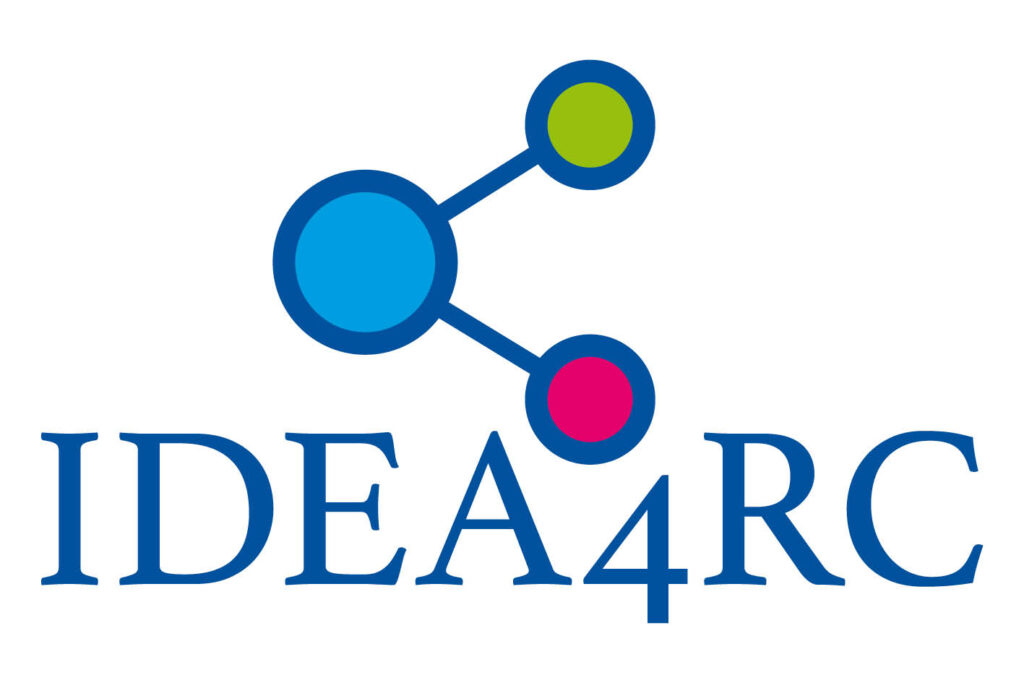The eleventh issue of the IDEA4RC newsletter
Hello,
In this newsletter, we are excited to share IDEA4RC’s participation in Vitalis 2025, the leading eHealth event in Scandinavia, which was held in Gothenburg from May 19 to 22.
We wish to highlight the speech gave by Magnus Carlsson, a former chair of the Swedish Sarcoma Association. Magnus is also the father of Ellinor, who was diagnosed with a rare form of sarcoma at eighteen and passed away six months later. We believe that his words powerfully explain the reason why we are pursuing our project.
Beyond Vitalis, our webinar series for the IDEA4RC Community of Interest has successfully concluded. All the video recordings are now available on YouTube. Plus, we’ve finalized a new set of deliverables, and we’re sharing their key highlights with you.
If you missed the previous issue, where we interviewed Roberta Gazzarata, biomedical engineer at HL7 and IDEA4RC member, about the project’s efforts to develop a European common data model for cancer, you can find it here.
Subscribe to our newsletter for bi-monthly updates on the project’s advancements. If youd like to invite your colleagues or friends to subscribe, share this link with them.
In a fathers story, all the reasons to pursue IDEA4RC |
|
by Magnus Carlsson
There was a time, a happy time, when I didn’t know what sarcoma was. There was a time I’d never even heard the word.
That time ended suddenly in May 2015 when a doctor said to my 18-year-old daughter You have a rare cancer in the blood vessels. It’s called angiosarcoma. It’s very rare and aggressive, but we’ll do everything we can to help you.
Six months later, just before Christmas, I drove Ellinor to the hospital for a session of radiation therapy. With my support she could hardly walk, but she managed to walk to and from the car. From the corridor where I waited, I heard a scream, when the treatment began.
Moments later, a hardened doctor came out and asked me to sit down. She said, “Magnus, Ellinor’s breathing indicates that the disease is in its final stages. I understood that she would never come home again with me.
Thanks to decades of research, fantastic research, we’ve seen extraordinary progress in many cancers. For breast cancer, the most common among women, the 10-year survival rate has climbed from 58% in 1980 to 86% today.
For prostate cancer, the most common among us men, it has risen from 37% to 88%.
That is nothing short of remarkable. It’s a testament of what science funding and data can do when they’re aligned.
But for rare cancers, like sarcoma, survival rates have remained almost unchanged for 40 years. That’s not just a statistic, it’s a failure of our system, of our priorities, and of our collective responsibility.
Read the full article here.
Meetings, results
|
|
|
|
During the opening event of Vitalis 2025, Annalisa Trama, IDEA4RC coordinator, and Eugenio Gaeta, IDEA4RC technical manager, gave the speech ‘Transforming healthcare with innovation’. A recording is available here. |
|
|
On Day 3 of Vitalis 2025, IDEA4RC hosted a track open to the public. Andreas Muth, head of the surgery department at Sahlgrenska University Hospital and member of IDEA4RC, introduced the project. A recording is available here. Then the track continued with the explanation of the challenges in the secondary use of health data for cancer research and the solutions the project has developed so far. A recording is available here. |
|
|
The second session of the track was devoted to legal and ethical aspects in the secondary use of health data. Sébastien Ziegler, chair of the Europrivacy International Board of Experts, led a discussion with Guillaume Byk (European Commission DG Health), Sigrun Gyrtrup (Danish Health Data Authority), Tina Chavoshi (Swedish eHealth Agency) and the audience at Vitalis. The panellists emphasised the importance of maintaining a balance between making data easily accessible to researchers and preserving public trust and robust data protection. Researchers answered with a key concern: the extensive time spent navigating data heterogeneity across member states, arguing that this complexity unfairly disadvantages researchers without dedicated legal support. A recording is available here. |
|
|
The technical components developed so far within the project have been presented to the audience at Vitalis 2025 during a dedicated track. A recording is available here. |
|
|
The webinar series for the IDEA4RC Community of Interest has successfully concluded, with four meetings organised between January and April this year. All the recordings are available here. |
|
|
IDEA4RC’s efforts have paved the way for HL7 Europe’s new project: creating a European Common Cancer Data Model. Roberta Gazzarata, a biomedical engineer with HL7 Europe and IDEA4RC, introduced this project at the HL7 International Working Group Meeting in Madrid on May 13, 2025. Discover more here. |
|
|
Three new public deliverables are available: IDEA4RC data model, Ethics guidelines for enlargement, Standards for a rare cancer data ecosystem. |
Whats up in health
|
|
|
|
On March 5, 2025, the European Health Data Space Regulation was officially published in the Official Journal of the European Union and entered into force on March 26, marking the beginning of the transition phase towards application. Find out more here. |
|
|
The public consultation promoted by the TEHDAS2 joint action on the first four key implementation guidelines came to a close, collecting nearly 350 responses from a diverse group of stakeholders. They will guide the finalisation process, with completion targeted for summer 2025. Two additional public consultations are planned within TEHDAS2: the second in September 2025, covering ten documents, and the third in May 2026, featuring six more. More details on these consultations are available on the TEHDAS2 website here. |


